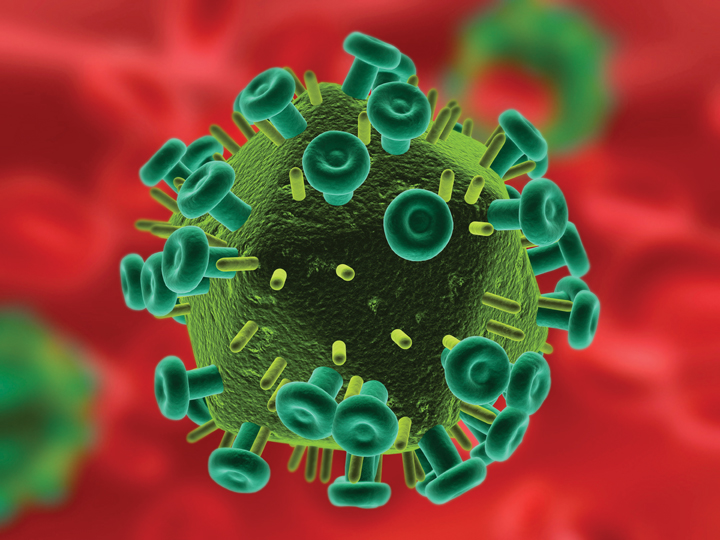 Research arising from a recent collaboration with a short-term visitor to NIMBioS and one of our senior personnel members has resulted in a publication in PLOS Computational Biology that investigates immune response to HIV infection.
Research arising from a recent collaboration with a short-term visitor to NIMBioS and one of our senior personnel members has resulted in a publication in PLOS Computational Biology that investigates immune response to HIV infection.
“Broad CTL Response in Early HIV Infection Drives Multiple Concurrent CTL Escapes” was the result of research by Sivan Leviyang (Mathematics and Statistics, Georgetown Univ) and Vitaly Ganusov (Microbiology, Univ. of Tennessee).
Through an analysis of patient datasets and a novel statistical method, the study aids understanding of the role of cytotoxic T lymphocytes (CTLs) in HIV infection. During HIV infection, CTLs identify and target HIV-infected cells by recognizing parts of viral proteins called epitopes. Yet, due to HIV’s rapid replication, the virus may also accumulate mutations, which reduce CTLs’ effectiveness in recognizing infected cells. Such mutations, referred to as CTL escape, are a major problem in the development of an effective vaccine.
Studies in the last decade have shown that CTL responses concurrently target multiple HIV epitopes, yet the effect on HIV dynamics and evolution is not well understood. The new study revisits these questions, and with a re-analysis of the escape data, finds that a vaccine that induces a broad CTL response targeting multiple viral epitopes should limit viral escape and provide control of HIV infection.
The paper can be found at http://journals.plos.org/ploscompbiol/article?id=10.1371/journal.pcbi.1004492
Citation: Leviyang S, Ganusov VV (2015) Broad CTL Response in Early HIV Infection Drives Multiple Concurrent CTL Escapes. PLoS Comput Biol 11(10):e1004492. doi:10.1371/journal.pcbi.1004492
